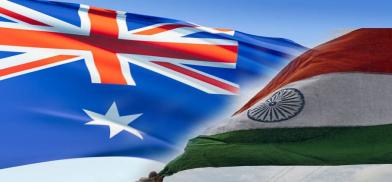High time India and Australia resume FTA negotiations to seal a conclusive deal
India and Australia have come strategically closer through forums such as the Quadrilateral Security Dialogue (QUAD) and Supply Chain Resilience Initiative (SCRI), writes Rahul Nath Choudhury for South Asia Monitor

India and Australia agreed to start an Early Harvest Scheme (EHS), attempting to ramp up the negotiations for the proposed Free Trade Agreement (FTA). An EHS is a precursor to an FTA between two trading partners when the negotiating countries identify certain products for tariff liberalization proposed in the actual FTA. The announcement was made subsequent to these two nations’ decision in June 2020 to resume the negotiations they started in 2011 to enter into an FTA. After nine rounds, negotiations were suspended over disagreements on several sectoral interests in 2015.
Since then a lot has changed between the two countries, which have come closer than before, especially after the outbreak of Covid-19. India and Australia have come strategically closer through forums such as the Quadrilateral Security Dialogue (QUAD) and Supply Chain Resilience Initiative (SCRI). An FTA will bring several opportunities for both economies.
Despite the closeness, a lot of challenges still remain which are likely to emerge during the upcoming negotiations. It is worth at this stage to explore some of the prospects that the proposed FTA will offer and also the major challenges that could cloud the negotiations.
Areas of disagreement
In an FTA, participants try to get bigger market access with a reduced rate of tariffs in the sectors where they have got comparative advantages. In case of India and Australia, the latter has a comparative advantage in sectors such as mining, minerals, and agriculture, dairy, meat and poultry products.
But the market for these sectors, especially for agriculture, remains highly protected in India. Indian tariffs are among the highest in the world. Interestingly, agriculture was one of the prime sectors disagreement over which prompted India to pull out of the Regional Comprehensive Economic Partnership (RCEP) at the last moment.
India’s domestic agricultural lobby is vehemently opposed to opening up the agricultural market to other trade partners. In addition, present relationship between the government and the farmers’ unions are at a critical stage owing to a large-scale opposition and demonstration to repeal three farm laws. Offering Australian farm products a favorable market access will be highly difficult for India in the given situation.
Along with agriculture, various other industries would also lobby hard to secure their dominant position and escape foreign competition.
With regard to Australia, India has a comparative advantage in the services sector. Securing broader access for its technically skilled workforce in the sectors such as Information technology (IT), engineering, construction and others have been long pending demands from Indian side. Unfortunately, Australian negotiators have been adamant on not relaxing the norms for the services sector for Indian businesses during the earlier rounds of negotiations.
FTA important for both countries
India’s appetite for the proposed FTA also comes from the fact that currently the country does not have any agreement with other Asia Pacific economies. Australia being one of the dominant economies in the region has a lot to offer.
Further, Australia’s participation in RCEP and Comprehensive and Progressive Agreement for Trans-Pacific Partnership (CPTPP) leaves India in an uncompetitive position compared to other economies in the Australian market. India would also like to seize the opportunity that is emerging from Australia’s ongoing trade tussle with China. China imposed restrictions on Australian exports worth USD 15.4 billion, following which Australia has become keen to diversify its export markets.
Given the current scenario, it seems both the nations are more serious than ever to lock the trade deal. It is reflected from Australia’s appointment of its former Prime Minister Tony Abbott to administer the negotiation. Abbott played a crucial role in the earlier rounds of discussions. Similarly, Indian Commerce Minister Piyush Goyal announced the negotiation process would be fast-tracked for the FTAs, including the one with Australia.
It is high time the two economies resume the negotiations and reach a conclusive deal at the earliest. Both countries should leave out the issues stalling the discussions and move forward. The FTA deal is highly feasible if Australia is prepared to take in a larger number of Indian professionals and India is prepared to walk the distance in the path of liberalization by reducing the tariffs to a certain extent.
Finally, India and Australia should respect the World Trade Organization (WTO) conditions to cover ‘substantially all trade’ between FTA parties in both goods and services. Considering the situation prevailing currently between the two economies, it would be a very rational step to engage in an EHS and nurture the ground for the final agreement. It is in the interest of both nations.
(The writer is a Research Fellow at the Indian Council of World Affairs (ICWA), New Delhi. The views are personal. He can be contacted at rahulnathc@gmail.com)









Post a Comment